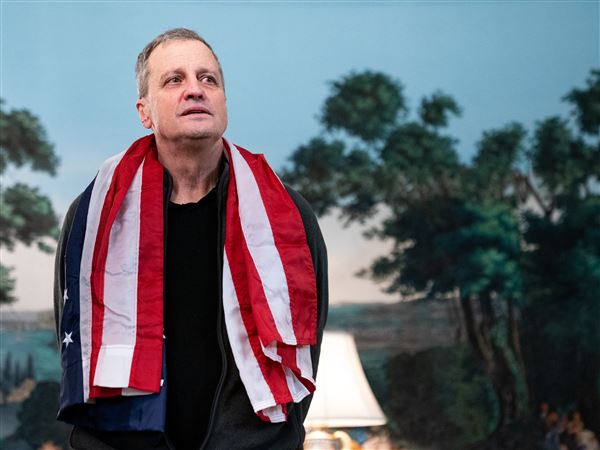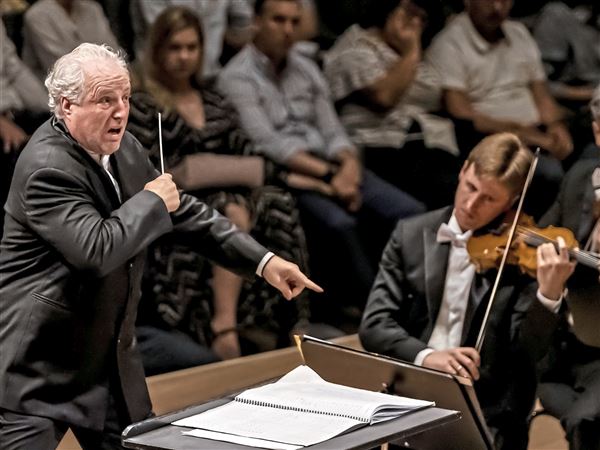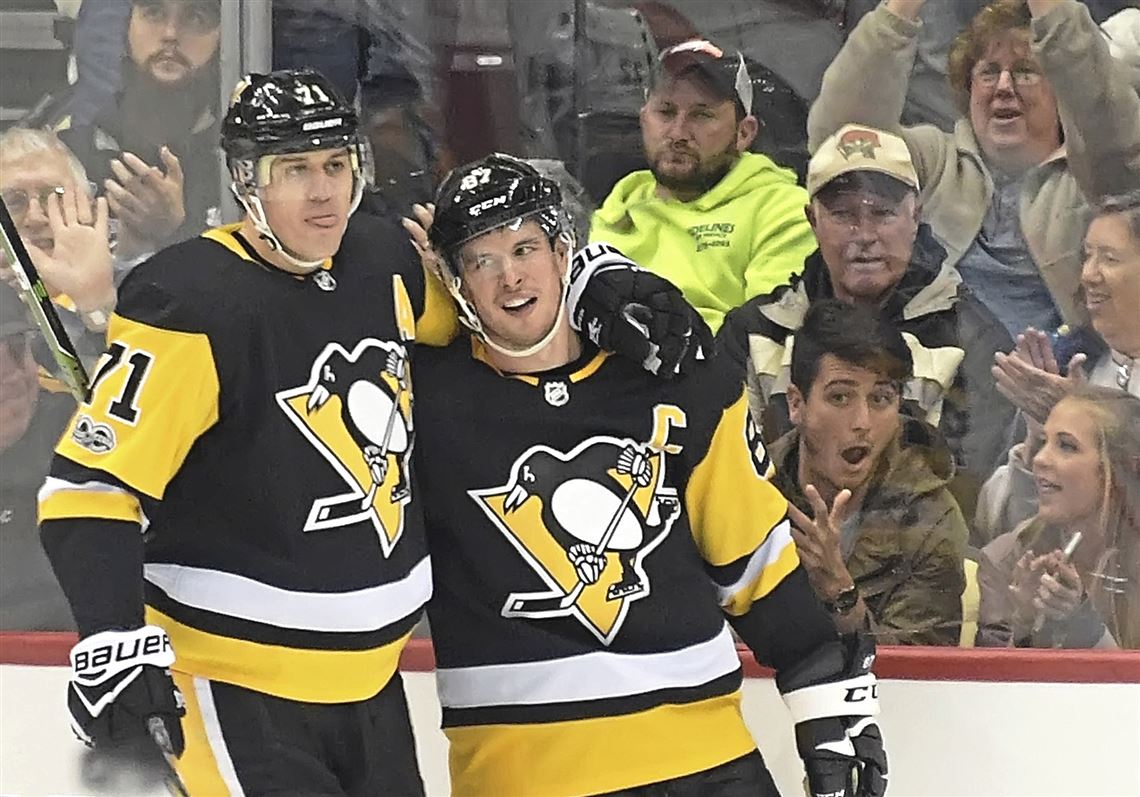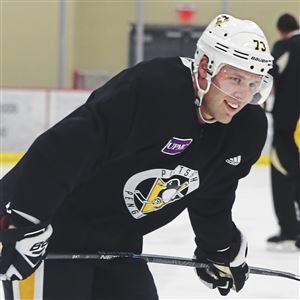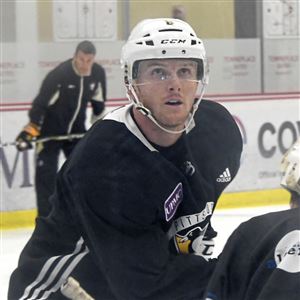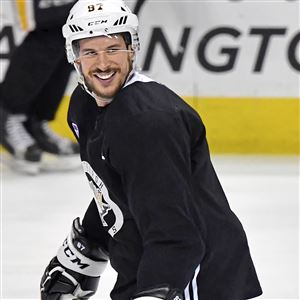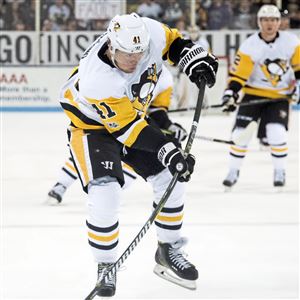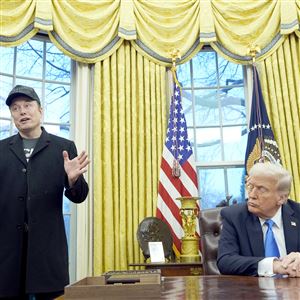First of a 15-part series leading up to the start of Penguins training camp:
Only a handful of NHL teams can match the Penguins’ top-end center depth, yet the position offers significant intrigue for the 2018-19 season because of the two spots below Sidney Crosby and Evgeni Malkin.
That is, of course, assuming the league’s best center tandem stays healthy — not exactly a luxury when talking about two players who’ve combined to miss about 17 percent of the regular season since entering the league.
Do the Penguins have the league’s best center tandem? The NHL Network thinks so, slotting Crosby No. 2 and Malkin No. 3 in its top 20 rankings. That puts the Penguins ahead of Toronto (No. 4 Auston Matthews and No. 10 John Tavares) and Washington (No. 12 Evgeny Kuznetsov and No. 14 Nicklas Backstrom).
But as good as they may be up top, a pessimist might tell you the Penguins’ bottom-six leaves something to be desired. Consider:
• Their projected third-line center, Derick Brassard, struggled plenty since arriving via trade with Ottawa.
• At 41, Matt Cullen is the NHL’s oldest player … and he’s coming off one of the worst years of his career.
• Two years ago, while with Detroit, Riley Sheahan went 79 games without a goal before scoring twice in the regular-season finale.
• Derek Grant had a breakout year, producing 12 goals and 24 points in 66 games with Anaheim. Before that, however, he played 86 NHL games with four franchises, didn’t score a single goal and accumulated just seven assists.
The questions relative to the franchise centers are minimal — again, can they avoid injuries? — but they abound for everyone else.
For the first in a series of 15 pieces that will examine various aspects of the Penguins leading up to the start of training camp, let’s take a deep dive into the organization’s center-ice depth chart.
Love our Penguins coverage? Consider subscribing.
Support journalism. Subscribe today.
The big boys
There should be zero concern here, assuming history comes within the same zip code as repeating itself.
Malkin was a legitimate Hart Trophy candidate whose 62 points from Jan. 1 through the end of the regular season trailed only Edmonton’s Connor McDavid (63). Malkin also potted a league-high 28 goals during that stretch en route to 42 for the year, his best goal-scoring season since finishing with 50 in 2011-12.
Crosby was an interesting case study. His shooting percentage dipped from 17.3 in 2016-17 to 11.7 in 2017-18. That’s really not a big deal, though, considering it averages out to his career mark of 14.5.
Of more lasting concern should be how/when Crosby’s goals came. Basically, in bunches. Crosby went through three significant goal-scoring slumps:
• One in 15 games from Oct. 21-Nov. 22
• Two in 14 games from Dec. 5-Jan. 2
• Two in 15 games from Jan. 17-Feb. 18
The shooting percentage and randomness of hockey is something Crosby is willing to accept, but sooner or later, enough’s enough. Crosby, who showcased yet again that he’s unquestionably the NHL’s best at batting pucks out of the air for goals, will surely want to iron out those peaks and valleys.
Bottom-six questions
No better way to start than with Brassard.
The Penguins stretched — and general manager Jim Rutherford got really creative — to add a player they thought would be the perfect fit as a third-line center.
Brassard was most certainly not. He produced just four goals in 26 games (including playoffs). That’s a far cry from the 96 he had in the 380 regular-season games prior to the deal.
The million-dollar question here is why the deal flopped. Was Brassard’s late-season injury — presumed to be groin-related — too much to overcome? Or is he simply not a fit for the Penguins system?
If you’re a betting person, pick the first one. Brassard was hurt. Bad. And there’s a good chance he’s on the James Neal Plan: stink your first little bit, then regroup/improve during the offseason and training camp. Brassard is too good of an offensive player to fail here.
The fourth line could conceivably feature three centers: Cullen, Sheahan and Grant. Poor Zach Aston-Reese and Dominik Simon. The Penguins could further change the calculus of their center position by shifting Brassard to wing, something they will likely try in camp, although don’t expect much traction there.
Cullen was acquired for his veteran leadership, penalty-killing and the ability to chip in the odd goal here and there. An optimist would point to the stylistic differences between Pittsburgh and Minnesota, where Cullen played last year, and believe that Cullen will get different results given how the Penguins prefer to play.
Sheahan rediscovered his confidence after struggling mightily in Detroit. He might take it a step further, too, now that he won’t have to take the majority of his shifts with Carter Rowney, Tom Kuhnhackl and Ryan Reaves — three players who don’t exactly set the world on fire offensively.
Grant was a career nomad, an AHLer who couldn’t break through, until Ducks coach Randy Carlyle gave him a chance to replace a pair of Ryans, Getzlaf and Kesler last year. The results were tremendous, and the Penguins hope those carry over.
That all sounds great, but it’s doubtful all four of those scenarios play out to perfection. Much will be determined by which ones don’t. And remember, Rutherford is watching; the GM has maintained this is his team for now, but he’s never been afraid to make a November or December move to address a weakness.
Pittsburgh sports news in my inbox? Yes, please.
Get the PG Sports Feed newsletter each weekday here.
Keep this in mind
• What happens with Phil Kessel? No, this isn’t a center-related question, but it’s worth noting because who the right wing clicks with could determine the composition of multiple lines.
If Kessel and Brassard can find chemistry, then you’ll probably see Patric Hornqvist with Malkin and Daniel Sprong with Crosby; that’s because coach Mike Sullivan prefers Malkin to play with “workers,” and Malkin and the two Swedes — Carl Hagelin is the other — have clicked in the past. If Sprong plays with Malkin, it’s likely Malkin won’t have enough opportunity to shoot the puck, which Sullivan wants.
If Kessel and Brassard don’t work together, look for Sullivan to play Kessel with Malkin; Crosby and Kessel rarely see time together, only after the occasional penalty kill or whenever Sullivan feels like offering a subtle tweak.
• Who kills penalties? Yes, Sheahan and Cullen figure to occupy the top two spots in the rotation, but what happens if somebody gets hurt or is in the box?
Brassard has never done it. His high-water mark in terms of PK minutes was 19:21 with the Rangers in 2014-15, an average of just 15 seconds per game. Yet the Penguins — maybe because they have to — believe he could fill one of the center spots on a kill.
Crosby has fared well in a pinch, although it’s doubtful he’ll ever become a regular part of the rotation because of the desire to allocate his minutes elsewhere.
Grant has done it throughout his career and would provide the most logical option. Presuming, of course, that he plays well enough to nail down a regular lineup spot.
• It’s easy to forget, because of the many things he did and does so well, that Crosby lacked consistent production on his wings in 2017-18.
Jake Guentzel disappeared for long stretches, scoring just once in 19 games twice, while Conor Sheary had a 44-game stretch where he converted all of four times.
If Guentzel can take the next step in terms of consistency, this could go a long, long way regarding Crosby’s offensive numbers.
Numbers that matter
70: Points needed by Malkin to reach 1,000 for his career.
53.0: Crosby’s faceoff winning percentage, his best in a full season since winning 55.9 percent of his draws in 2009-10.
18: Goals for Brassard in 58 games prior to the trade to Pittsburgh.
Jason Mackey: jmackey@post-gazette.com and Twitter @JMackeyPG.
First Published: August 27, 2018, 1:00 p.m.
